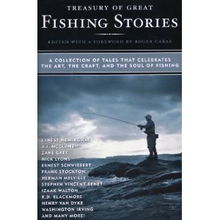Content:
Introduction: Simulated fishing, also known as fly fishing or bass fishing in a controlled environment, has gained immense popularity among anglers seeking a year-round fishing experience. Whether you are a beginner or a seasoned pro, having the right equipment is crucial for success. In this article, we will delve into the essential equipment swap techniques that will help you elevate your simulated fishing game.

Choosing the Right Rod: The rod is the backbone of your fishing setup. When it comes to simulated fishing, it's important to select a rod that is suitable for the type of fish you are targeting and the environment you are fishing in. Here are some tips for choosing the right rod:
- Material: Graphite rods are the most popular choice due to their lightweight and sensitive nature. They are ideal for detecting subtle bites and providing a smooth casting experience.
- Length: The length of the rod should be proportional to the distance you need to cast. A longer rod allows for longer casts, while a shorter rod is more maneuverable in tight spaces.
- Action: The action of the rod refers to how it bends when pressure is applied. Fast-action rods are best for casting lighter lines and presenting flies or lures with precision. Slow-action rods are more forgiving and suitable for casting heavier lines and handling larger fish.
Selecting the Proper Reel: The reel is responsible for storing the line and controlling the retrieve. Here are some key factors to consider when selecting a reel for simulated fishing:
- Type: Fly fishing reels are designed for fly fishing, while spinning reels are better suited for bass fishing. Choose the type that matches your fishing style.
- Line Capacity: Ensure that the reel can hold enough line for your chosen rod and the distance you plan to cast.
- Drag System: A good drag system is essential for controlling the fight with a fish. Look for a reel with a smooth, consistent drag that can handle the size of fish you are targeting.
Choosing the Right Line: The line is the connection between the angler and the fish. Here's how to select the appropriate line for simulated fishing:
- Fly Fishing: For fly fishing, choose a fly line that matches the weight of your rod and the type of fly you are using. Floating lines are best for dry flies, while sinking lines are ideal for nymphs and streamers.
- Bass Fishing: For bass fishing, a monofilament line is a popular choice due to its flexibility and strength. The line size should be appropriate for the type of lure you are using and the size of the fish you are targeting.
Choosing the Right Lures and Baits: The choice of lures and baits can make or break your fishing experience. Here are some tips for selecting the right lures and baits for simulated fishing:
- Size: Match the size of your lure or bait to the size of the fish you are targeting. Larger fish require larger lures, while smaller fish can be caught on smaller baits.
- Color: The color of your lure or bait should mimic the natural prey of the fish you are targeting. Consider the water clarity and the time of day when choosing the color.
- Action: The action of the lure or bait should mimic the movement of the fish's natural prey. For example, a lure that wiggles or bobs can attract fish that are feeding on smaller organisms.
Maintenance and Storage: Proper maintenance and storage of your equipment are crucial for extending its lifespan and ensuring optimal performance. Here are some tips:
- Clean your equipment after each use to remove salt, dirt, and debris.
- Store your equipment in a cool, dry place away from direct sunlight.
- Regularly inspect your equipment for any signs of wear and tear, and replace parts as needed.
Conclusion: Mastering the art of simulated fishing requires a combination of skill, knowledge, and the right equipment. By following these essential equipment swap techniques, you can improve your chances of success and enjoy a more rewarding fishing experience. Remember, the key to success in simulated fishing lies in understanding the habits of the fish you are targeting and using the appropriate equipment to mimic their natural environment. Happy fishing!












